Mirella Sichirollo Patzer's Blog, page 24
May 23, 2014
Top 10 most evil women in history
As girls, they may have been made of sugar and spice and everything nice; but as women they were pure evil.


















Published on May 23, 2014 09:04
April 20, 2014
History and Women May Book Club Choice! THE SECRET WOMAN by Victoria Holt!
I'm excited about our May Book Choice! I have been a big fan of Victoria Holt for decades! THE SECRET WOMAN promises to be a wonderful gothic romance!

Here's the back cover blurb:
With Over 100 Million Copies Sold, Victoria Holt is the Queen of Gothic Romance!
Dark Secrets. Lost Treasure. Delicious Scandal. Anna Brett fears she's doomed to be a governess to an English family for the rest of her life. But when the dashing captain Redvers Stretton struts back into her life, she is whisked away from the bleak English countryside forever. But is that such a good thing? While the charming blue-eyed captain makes Anna forget her troubled past, he is hiding dark secrets of his own. It's no coincidence that Stretton's ship is named The Secret Woman. During their voyage to the South Seas, with a murder dogging her steps and the mystery of a missing treasure haunting her dreams, Anna is forced to confront the clever captain—a man who may have just as many secrets as she.
Amazon.ca
Amazon.com.au
Amazon.co.uk
Barnes and Noble
Book Depository
Chapters Indigo










Here's the back cover blurb:
With Over 100 Million Copies Sold, Victoria Holt is the Queen of Gothic Romance!
Dark Secrets. Lost Treasure. Delicious Scandal. Anna Brett fears she's doomed to be a governess to an English family for the rest of her life. But when the dashing captain Redvers Stretton struts back into her life, she is whisked away from the bleak English countryside forever. But is that such a good thing? While the charming blue-eyed captain makes Anna forget her troubled past, he is hiding dark secrets of his own. It's no coincidence that Stretton's ship is named The Secret Woman. During their voyage to the South Seas, with a murder dogging her steps and the mystery of a missing treasure haunting her dreams, Anna is forced to confront the clever captain—a man who may have just as many secrets as she.
Amazon.ca
Amazon.com.au
Amazon.co.uk
Barnes and Noble
Book Depository
Chapters Indigo









Published on April 20, 2014 09:39
April 18, 2014
Never Be at Peace: the making of an Irish anti-Cinderella by Guest Author M.J. Neary
Guest author, Marina J. Neary, offers an intriguing look at her latest novel about the life of Helena Molony:
Never Be at Peace: the making of an Irish anti-Cinderella
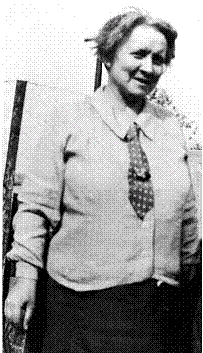
Helena Molony
Just for the record, I hate fairy tales - unless they are written by Brothers Grimm. Saccharine happy endings drive me insane - unless the ogre eats the princess. So it shouldn't surprise you that I grasped at a chance to write an anti-Cinderella story set in Ireland. On one hand, we have all the ingredients of a timeless classic: the spunky idealistic orphan girl (Helena Molony), indifferent older siblings (Frank Molony and his wife) a cruel stepmother (who is mentioned in passing), a fairy godmother (Maud Gonne), and even a Prince Charming (Bulmer Hobson). Irish history doesn't follow the happily-ever-after protocol. Cinderella and Prince Charming start off on their noble quest to free Ireland from the Wicked King George, but about half-way through the journey they have a disagreement and end up on the opposite sides of the barricade. Cinderella runs off with a mentally unstable married troubadour (Sean Connolly), and Prince Charming is branded a traitor and banished from the kingdom.
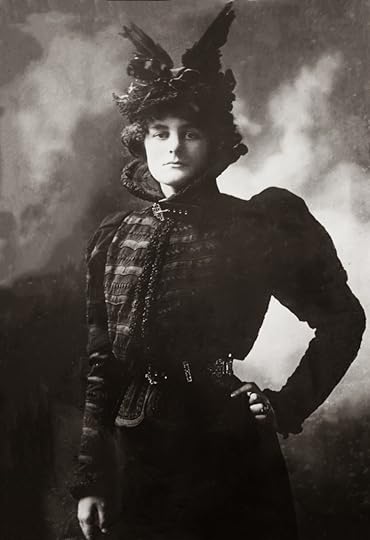
Maud Gonne
My readers often ask me why I choose to write about the lesser known historical characters. Why did I not write a novel about Maud Gonne, a stunning icon of feminism and rebellion? Because Maud Gonne does not need any more publicity. There was an actual term in early 20th century Ireland - "Maud-Gonning", referring to defiant melodramatic behavior which set Maud apart from her respectable contemporaries. There is already one novel "Willie and Maud" about Maud Gonne's turbulent relationship with Yeats. One novel per historical figure is enough. I prefer not to develop a topic that has already been exhausted by other novelists and historians. My goal was to shed some light on her protegee Helena Molony, whom she had discovered, adopted, groomed and, ultimately, doomed her to a life of ideological martyrdom. Even if Helena had stood a chance of ever embracing traditional Irish womanhood that involved a job in the trades, marriage and children, Maud Gonne had successfully removed her from that path.
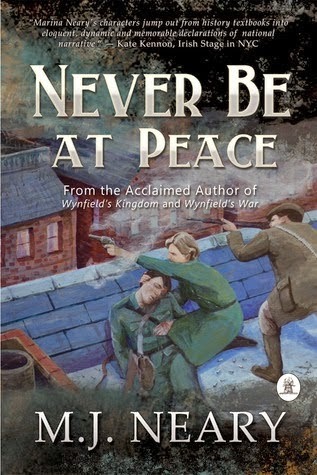
I started writing "Never Be at Peace" during a major bout with separation anxiety from its predecessor "Martyrs & Traitors: a Tale of 1916". The two novels are best described as companion pieces. A few of my Beta readers who had loved "Martyrs" were twisting my arm to take his first love Helena Molony and devote an entire novel to her. I quickly realized that there was a lot of room for developing another story. Generally I don't work in a linear fashion, meaning I don't write from A to Z. Certain scenes appear before my eyes quite vividly. I hear the arguments, the love confessions, deliver patriotic speeches, the deathbed tirades. Sometimes I write the epilogue first. In the end I take those fragments and assemble them into the master manuscript, like a mosaic.
While doing research for "Never Be at Peace" I leaned on many of the same sources as I did when researching "Martyrs & Traitors". In some ways, it was easier, because a lot of the hard work had already been done. I already had the facts and the events mapped out. Essentially, I was describing the same events through the eyes of another historical figure. It's like having another camera angle. I already knew so much about the Irish Volunteers, so I needed to read up on the Irish Citizen Army. You have no idea how much money I spent on those rare books that I had to order from Ireland because they contained original illustrations that you cannot find online in electronic format.
One of the most frustrating things is the lack of photographic documents featuring the heroine. Most of Helena's photos from her acting days had perished in a fire at the Abbey Threatre. I would have given anything to see a few photos of her in costume, in character. There are a few group photos where she poses with various nationalistic and labor-focused organizations. I've heard from certain sources that Helena was compared unfavorably to the woman her Prince Charming (Bulmer Hobson) ended up marrying.
The consensus is that Helena did not "keep well". She ended up a prematurely aged, mentally disturbed alcoholic. To be fair, Bulmer's wife Claire did not end up in a much better place. Their marriage fell apart, and she became this 50-year old party girl at a bar. Through a mixture of cunning and diplomacy, I was able to procure a few photos of Claire Hobson. One of them came from the archives of the British National Library. It cost me $300 to get a copy of it, but it was money well spent. To my delight I found some physical resemblance between Claire and myself. Given that Claire was not a revolutionary figure, there is even less information available about her, and her descendants guard her mystery with vigilance. From what I've heard, they are not very keen on sharing personal information about her, which, understandably, inflames my curiosity even further. My sixth sense tells me that Claire had her own "broken Cinderella" story and she had her own demons, though she battled them more discretely than her predecessor, Helena Molony.
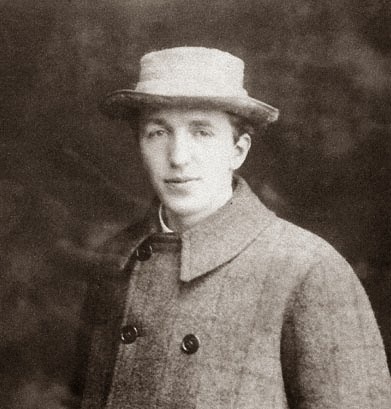
Bulmer Hobson In the spring of 2012 I wrote an essay on Bulmer's sister Florence, who was Ireland's first female architect. The article appeared in several Irish publications. It was my secret hope that one of Bulmer Hobson's descendants would read it and feel inclined to reach out to me. Surely enough, two years later Bulmer's grandson, Roger Mitchell, sent me a very humorous and encouraging e-mail with photos from the private family collection. I have not mustered the courage to ask him for permission to share these pictures. Perhaps one day I will be able to present them to the world. The anniversary of the Easter Rising is just around the corner, and we expect a wealth of new original material to surface.
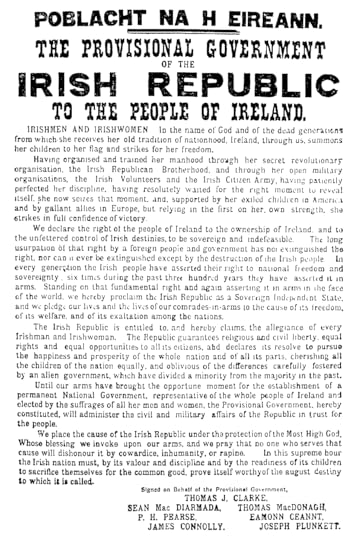
To learn more about Marina J. Neary, you can reach her through Facebook page at:
Marina J Neary









Published on April 18, 2014 00:33
April 16, 2014
Louise-Marie d'Orleans
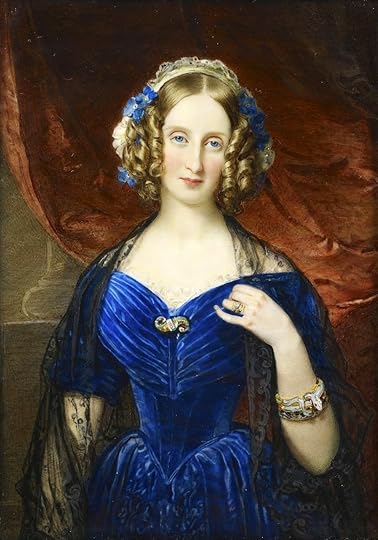 Louise-Marie d'Orleans
Louise-Marie d'OrleansKing Leopold I of the Belgians was the beloved Uncle of Queen Victoria, her advisor and mentor during her early reign and the man who encouraged her marriage to his nephew, Albert. Everyone knows about his marriage to the daughter of the Prince Regent, Princess Charlotte, whose tragic death followed a scandalous mis-management of her pregnancy. Leopold was invited to take the Belgian throne, but what about his less known second wife whom he married on 9th August 1832?
The eldest daughter of the King of the French, Princess Louise-Marie Therese Charlotte Isabelle d'Orleans, was a descendant of Philippe d'Orléans, Regent for Louis XV, Madame de Montespan, and of Louis XIV and Philippe I, Duke of Orléans both sons of Louis XIII on her father’s side, and on mother's a descendant of Maria Theresa of Austria and Catherine de' Medici.
Blonde, fair skinned, blue-eyed Louise Marie was a shy, innocent girl who dreaded the idea of becoming Queen, weeping constantly at the thought of separation from her family. Leopold was a handsome seasoned soldier and statesman, a widower and an experienced lover of forty-two, an ambitious man of the world, somewhat hardened by past sorrows and disappointments. He was also a Lutheran, and, reputedly, a Freemason, she a devout and pious Catholic.
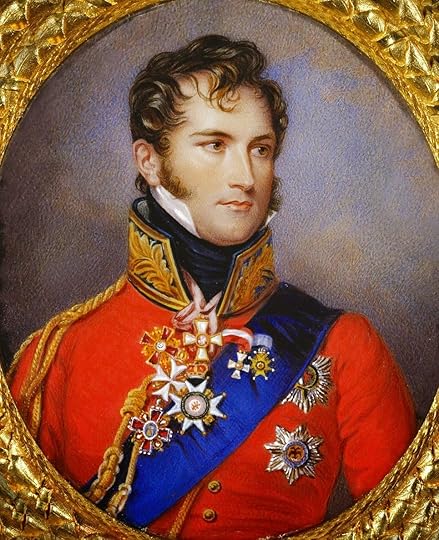 King Leopold I of the Belgians
King Leopold I of the BelgiansLeopold confided to a friend, "I'm delighted with my good little Queen: she is the sweetest creature you ever saw, and she has plenty of spirit."
Despite her initial reluctance, Louise-Marie fell deeply in love with her husband and became a devoted wife and loving mother. Very shy, she was only seen in public when Leopold insisted, but she became very popular at the Belgian court with her generosity and beauty.
In the early 1830’s, Flanders was stricken by famine and poverty ran rampant through Belgium. Louise-Marie was patroness of many philanthropic, religious and educational institutions. Her friends, servants and entourage knew her as a gentle and forgiving mistress whose charity was ‘inexhaustible’, and her popularity grew in direct proportion to criticism for Leopold’s infidelities.
Louise-Marie personally handed out clothing for the poor in inclement weather, organised recurring lotteries on behalf of the poor, and gave household items to any exhibition where the poor would benefit
When a farmer said in her hearing that he admired a pedigree cow and that one like that would transform his life, Louise-Marie allegedly sent him two of the creatures as a gift. When people heard a tale of hardship, they exclaimed: "If only the Queen knew!" which after her death became: "If only the Queen were still alive!"
 Leopold I and Louise-Marie with their childrenLeopold and Louise-Marie had four children: Louis-Philippe in 1833 who died a year after his birth, Philippe Eugene [1837-1905] whose son Albert I was the third King of Belgians and reigned during World War I, and Marie-Charlotte [1840-1927] who married Archduke Maximilian I of Austria and became the Empress of Mexico.
Leopold I and Louise-Marie with their childrenLeopold and Louise-Marie had four children: Louis-Philippe in 1833 who died a year after his birth, Philippe Eugene [1837-1905] whose son Albert I was the third King of Belgians and reigned during World War I, and Marie-Charlotte [1840-1927] who married Archduke Maximilian I of Austria and became the Empress of Mexico. Leopold was instrumental is arranging the marriage of his niece, Queen Victoria, the daughter of his sister, Princess Victoria of Saxe-Coburg-Saalfeld and Edward Duke of Kent, to his nephew, Prince Albert, son of his brother, Duke Ernest I. Leopold had offered Victoria advice in the early days of her monarchy, although she asserted her independence early in her reign.
After the Revolution of February 1648, Queen Louise-Marie’s father, King Louis Philippe, abdicated and his family fled to England. They lived at Cleremont, where the exiled king died in August 1850.
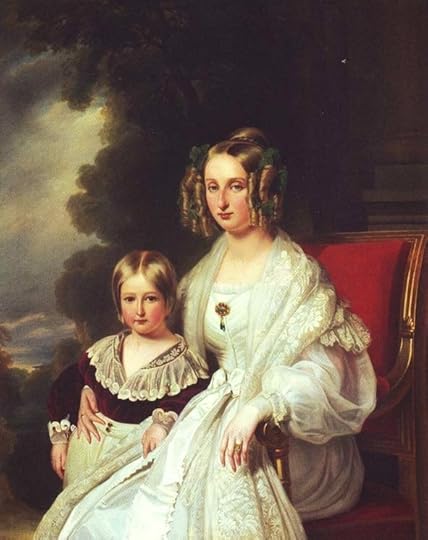 Marie dOrleans, Marie-Louise's sister who died at 25
Marie dOrleans, Marie-Louise's sister who died at 25 The death of Louise-Marie’s brother, Ferdinand-Philippe, Duc d'Orléans in a coaching accident at the age of 31, and of her sister the Princess Marie of consumption at 25, had been terrible blows, as had the loss of her first born son at a year old. By this time, Louise-Marie was very ill with consumption.
She died in Ostend two months later, on 11 October 1850 at the age of 38. She is buried beside her husband in Royal Crypt of the Church of Our Lady of Laken. King Leopold never returned Louise Marie’s passionate devotion and wasn’t faithful, but he sincerely mourned his consort and paid her this touching tribute: "Her death was saintly, like her life."
On December 10, 1865, at the Palace of Laeken, in Brussels, Leopold was on his death bed, calling:
"Charlotte...Charlotte..." although no one was sure as to whether he was calling to his daughter, the Empress of Mexico, or to his first wife, Princess Charlotte.
"In the name of the love you bear for the Queen's memory," said his daughter-in-law Marie-Henriette the wife of Leopold II, "will you not be converted to her religion so that you may meet her again in Heaven?"
"Nein..." he whispered, then died.
I'm inclined to think it was his first wife he called for, as before she died, Princess Charlotte asked that Leopold be buried beside her when his time came. Leopold had a space made for him in her tomb in St George’s Chapel at Windsor, reminding Queen Victoria of his wish just before he died. A wish which strangely, was not granted.
 Church of Our Lady of Laeken, BrusselsLouise-Marie wanted to be buried in Laeken, so Leopold had the church of Our Lady Of Laeken in Brussels constructed in her memory. The first stone was laid by Leopold I in 1854. The church was consecrated in 1872, but not completed until 1909. The crypt holds the tombs of the Belgian royal family, including those of all the former Belgian kings
Church of Our Lady of Laeken, BrusselsLouise-Marie wanted to be buried in Laeken, so Leopold had the church of Our Lady Of Laeken in Brussels constructed in her memory. The first stone was laid by Leopold I in 1854. The church was consecrated in 1872, but not completed until 1909. The crypt holds the tombs of the Belgian royal family, including those of all the former Belgian kingsFor further information, I recommend an excellent blog called, The Cross of Laeken, which covers many aspects of the Catholic Belgian Royal Family from its origins to the present day.
Anita Davison is a Historical Fiction Author whose latest release, ‘Royalist Rebel’ a biographical novel set in 17th Century England, is released by Pen and Sword Books under the name Anita Seymour
=============================================
BLOG: http://thedisorganisedauthor.blogspot...
FACEBOOK: http://www.facebook.com/anita.davison?
GOODREADS: http://www.goodreads.com/AnitaDavison
TWITTER: @AnitaSDavison
=============================================









Published on April 16, 2014 00:32
March 30, 2014
The dark secrets of Catherine the Great - A Woman of Many Legends

The young EmpressCatherine the Great
Catherine the Great was empress of Russia from 1762-1796. No Russian woman had ever reigned as long. Catherine's notorious love affairs and ravenous relationships are at the root of all the scandals, legends, and rumors that still abound about her, even though it is unlikely they are true. She took on lovers, and neither her age, nor her lover’s age mattered – young and old came to her bed from the time she was in her youth until she was old.
One rumor is that she died because of her voracious sexual appetite while attempting to have sex with a stallion. Apparently, the harness that held the horse above her broke and she was crushed.
Another story circulated that she died while sitting on the toilet and it broke or spring blades stabbed her when she sat down upon it. The toilet seat rumor may be partially true because she did have a stroke while on the john and later died in her bed.
Her first marriage was to Emperor Peter III, but because he was nothing more than a bungling incompetent, she deposed him with the help of Grigory Orlov, the military officer with whom she was having an illicit affair with. Deposing him was not enough, she had him arrested and killed so she could safely take the throne.
After Catherine granted Muslims the right to build mosques, her Christian subjects voiced their concerns through a petition they sent to her complaining that they were being built too high. Catherine’s response was simple. She was the Tsarina of Russian land—the sky was beyond her jurisdiction.
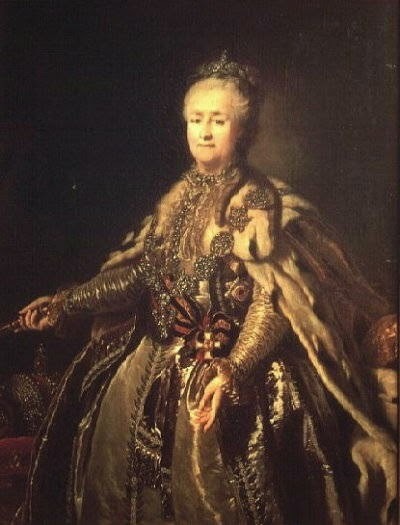
The older EmpressCatherine the Great
Catherine took on numerous lovers throughout her life and rewarded them lavishly with titles, land, estates, palaces, homes, and even serfs. Whenever she broke off one of her affairs, it was always on good terms. One or two of her children were illegitimate. But beware anyone man who betrayed her. For example, when she was 60 years old, her husband at the time secretly eloped with a 16-year-old girl and married her. Embittered, Catherine took her revenge. She tracked them down, and then secretly sent police disguised as women to whip her nemesis while forcing her husband to watch.
Despite her sordid private life, Catherine was well liked by her people, and her rule was known for her simple to understand policies. She counted the French philosopher Voltaire, and Grimm as confidants. The letters she exchanged with them was a public relations campaign to gain her credibility and create an image as a mother of Russia. Because of her efforts, Russia adopted the philosophies and culture of western Europe.
The novels of Eva Stachniak, The Winter Palace and Empress of the Night are an indepth, highly polished and sanitized version of her life.

The follow-up to the #1 bestseller The Winter PalacePerfect for the readers of Hilary Mantel and Alison Weir.
Catherine the Great, the Romanov monarch reflects on her astonishing ascension to the throne, her leadership over the world's greatest power, and the lives sacrificed to make her the most feared woman in the world--lives including her own...
Catherine the Great muses on her life, her relentless battle between love and power, the country she brought into the glorious new century, and the bodies left in her wake. By the end of her life, she had accomplished more than virtually any other woman in history. She built and grew the Romanov empire, amassed a vast fortune of art and land, and controlled an unruly and conniving court. Now, in a voice both indelible and intimate, she reflects on the decisions that gained her the world and brought her enemies to their knees. And before her last breath, shadowed by the bloody French Revolution, she sets up the end game for her last political maneuver, ensuring her successor and the greater glory of Russia.
Author Eva Stachniak has written a sequel to The Winter Palace, her first novel about Catherine the Great. The novel is told in present tense in Catherine's own point of view as the great empress lays dying and reflects upon her life. She has suffered a massive stroke and death is imminent and near. The author did a wonderful job of getting deep into Catherine's head - her thoughts, her desires, her emotions.
There is a strong focus on her relatioships with her children and grandchildren, what brought her joy, and what she regrets. As always, the research is thorough, along with wonderful descriptions of the era's clothing, sights, and smells.
The story is presented in flashback mode, flitting back and forth between various points in her life in no chronological order. As a reader, I found this novel's focus challenging to understand and follow. Because of this, I highly recommend readers read The Winter Palace first to get a stronger grip on the storyline. For lovers of Catherine the Great and her impact on history, Eva Stachniak's novels are a great way to begin learning about this fascinating woman of history.









Published on March 30, 2014 11:56
March 22, 2014
Book Giveaway - My Notorious Life by Kate Manning

Happy Weekend, everyone! Come on over to my other blog, Historial Novel Review Blog and leave a comment to win a copy of MY NOTORIOUS LIFE by Kate Manning. I've read this one and it's darn good!
This Oprah's Book Club choice is definitely causing a stir. It's a tale about New York city's most scandalous, most notorious midwife. All you have to do is leave a comment to win a copy!
Here's the back cover blurb!
Based on a true story from the scandalized headlines of Victorian New York City, My Notorious Life is a portrait of Axie Muldoon, the impoverished daughter of Irish Immigrants who becomes an enormously successful—and controversial—midwife. Separated from her siblings, apprenticed to a doctor, Axie parlays the sale of a few bottles of “lunar tonic for relief of female complaint” into a thriving practice as a female physician known as “Madame X.” But as she rises from the gutter to the glitter of Fifth Avenue, Axie discovers that the right way is not always the way of the law, and that you should never trust a man who says, “trust me.” But what if that man is an irresistible risk-taker with a poetical soul? Soon, Axie’s choices put her on a collision course with one of the most zealous characters of her era: Anthony Comstock, founder of the Society for the Suppression of Vice, and it will take all of her power and wealth to outwit him and save herself and her family from ruin.
A love story, a family saga, and a vivid rendering of a historical time and heated political climate, My Notorious Life is the tale of one woman making her indomitable way in a difficult world. Axie Muldoon is a heroine for the ages.









Published on March 22, 2014 09:53
March 12, 2014
Nancy (Anna) Storace (1765 – 1817)

Anna Storace
Nancy (Anna) Storace was a gifted child, and born into a beautiful world filled with music and nature. She was the daughter of an Italian musician, Stefano Storace, who immigrated to Ireland. Her mother was Elizabeth Trusler, the daughter of the proprietor of Marylebone Gardens, the pleasure garden of an old manor house near London.

Venanzio Rauzzini
She received voice lessons from Venanzio Rauzzini, a a renowned castrato, composer, pianist, singing teacher, and concert impresario. Under his talented tutelage, she made her first singing appearance when she was eight-years-old at the London Haymarket Theatre. But she needed to be near the best, so to further develop her, Anna’s parents too her to Venice Italy. She studied under the famous Antonio Sacchini. It was the start of a magnificent career.

Antonio Sacchini
She was so talented, composers wrote operas specifically for her and her voice, which were met with resounding success. Anna made many friends, including the Irish tenor Michael Kelly, castrato Marchesi, Wolfgang Amadeus Mozart, and Joseph Haydn.

Wolfgang Amadeus Mozart
Storace worked so closely with Mozart, that it was rumored they had an affair, although this has never been proven. He even played the piano while she sang concerts. Anna performed for the highest nobility including princes and emperors. She could sing a voletta of semitone octaves which forced her voice to the highest and lowest of notes, but was warned that this might injure her vocal cords. She ignored the advice and performed in numerous operas that played to full houses in Vienna, Milano, and Venice.
Then one day, disaster struck. While she was singing in an aopera, in the middle of the first act, Storace suddenly and completely lost her voice. For five long months, she was unable to utter a sound. Mozart tried to come to her aid and wrote a short cantata for her return to the stage, but her voice was not yet fully recovered. Mozart stepped in again and rewrote passages of The Marriage of Figaro at a lower pitch just for her.
In March 1784, with great pomp and elaborate display, she married John Abraham Fisher, a violinist. Not long into their marriage, Fisher began to treat her badly, bullying her and striking her. The abuse soon became public and Fisher suffered much loathing by the public at large. Anna had friends in high places, and the emperor stepped in and banished Fisher from his lands. Fisher fled to Ireland and the couple were soon separated. Anna gave birth to his child, a daughter who lived less than 6 months.
Her career continued to flourish. In 1794 Storace had a romantic affair with tenor, John Braham.
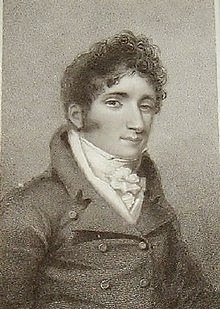
John Braham
They never married, but had a son together. Years later, their marriage soured and they had a very bitter break-up. It is believed all the acrimony contributed to her death a year later.

Anna's story and her romance with the famous Mozart have been immortalized in the novel, Vienna Nocturne by Vivien shotwell.
Back Cover Blurb
Vienna Nocturne tells the story of the turbulent life and brilliantly successful career of young British opera singer Anna Storace, a child prodigy who is taken by her parents to Italy at age thirteen to advance her career. In love with life and wildly ambitious, Anna wants everything--to be famous, to be loved--and this leads her to make some fatal choices. We watch her turn from a carefree young girl to a passionate young woman, and it is during this transformation that her affair with Mozart blossoms. The story of their love, no less powerful for being forbidden, is reminiscent of the passionate thwarted romances described in Loving Frank and Hotel on the Corner of Bitter and Sweet. Written in melodious prose by a young author studying opera at Yale, Vienna Nocturne is dramatic story of a woman's battle to find love and fame in an 18th-century world that controls and limits her at every turn.
Book Reviewby Mirella Sichirollo Patzer
I truly enjoyed this biographical novel about a very gifted young woman who could sing like an angel. Anna Storace was young, impressionable, and passionate about her singing. Her career is burgeoning, perfect, and she is much beloved. Her private life however, is filled with heartache and misfortune. Left carrying a lover’s child, she marries a violinist to save her reputation. He is a brutal man and she suffers much abuse at his hands. Her health suffers and this affects her voice.
It is the brilliant composer, Wolfgang Amadeus Mozart, who befriends her and comes to her rescue. Even though he is happily married, a bond grows between him and Anna. His loyalty to her lasts for the rest of her life. He is always in the background as a protector, a supporter, a faithful colleague, a lover.
The novel is beautifully written, its presentation tender, romantic, and beautifully evocative. The fashion, music, and society of the times is elegantly captured. There is depth to all the relationships between the characters, but the relationship with Mozart was beautifully rendered. What a gallant – my heart could not help but melt at his wonderful appearances. VIENNA NOCTURNE is a true treasure!









Published on March 12, 2014 11:14
March 10, 2014
I'm Writing - The Prophetic Queen

10th CenturyMagyar Warrior
Novel Excerpt The Prophetic Queen
From a window in the great hall, Heinrich and I watched our sentries escort the band of Magyars through the fortress gates. For nine years, we had welcomed them thus, handing over our gold and silver to them as tribute in exchange for peace. Expecting another uneventful and peaceful meeting, the foreigners had sent their smallest contingent thus far. They would soon learn this time would be different.









Published on March 10, 2014 09:58
March 3, 2014
The Most Notorious Madam of New Orleans - Josie Arlington

Mary Deubler(aka)Josie Arlington
Mary Deubler was born in New Orleans to German immigrants in 1864. From an early age, not only was she considered beautiful, but she was also smart, shrewd, and ambitious. When she was seventeen years old, she began working as a prostitute using the alias of Josie Alton. She also acquired a boyfriend named Philip Lobrano, known for being lazy and useless. Despite this, with her earnings as a prostitute, Josie financially supported Philip and her family.
Easily angered, and with a penchant for violence, Josie soon developed a reputation as a spunky fighter. Always ambitious, she soon opened her own brothel under the name Josie Lobrano. It did not take long for her brothel to gain fame due to her fiery temper, and the rough clientele who frequented it.
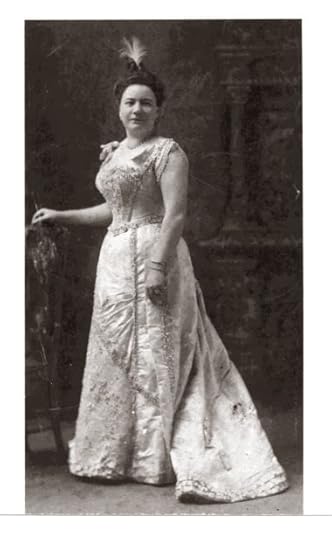
With her sharp business acumen and drive to succeed, Josie’s brothel soon gained fame and wealth. But with her fiery temper and tight-fisted rule, a major brawl broke out inside the brothel in 1890 that involved nearly everyone who lived and worked and visited there. During the fight, Philip Lobrano shot and killed Josie’s brother, Peter. He was arrested and prosecuted, but was lucky and was acquitted. She dumped Peter and took up with a new boyfiend named John Brady. The fight and its aftermath so disturbed Josie, that she avoided anyone with a violent nature or who was known for fighting.
Eager for a fresh start, Josie decided to raise the status of her brothel. Her dream was to operate the classiest brothel in the country. To achieve this, she changed her name to Josie Arlington, fired the whores and servants who worked for her, and forever banned fighting from establishment. She hired new prostitutes preferring classier foreign prostitutes with reputations for being sociable, good-natured and friendly. She allowed no shady characters past her doors, shutting her door to all riff raff and criminals. Only distinguished gentlemen were allowed entry. She even gave her house a new name, The Chateau Lobrano d’Arlington.
She was definitely on the right track, because it soon became the richest, most respected, most highly-thought of and preferred brothel in New Orleans. At the first breath of any potential trouble, Josie had the perpetrator immediately expelled, and it didn’t matter whether the trouble-makers were one of her customers or her whores.

Soon, she had enough money for a grander house and built The Arlington, a looming luxurious four-storey mansion boasting sixteen bedrooms and a large round cupola at its peak. It had several parlors and dens. She decorated each one in a different foreign décor – Turkish, Japanese, French, and Viennese, and with the most lavish of furnishings including expensive paintings, curtains, ornaments, and tables and chairs. It gained fame as being the most decorative and costly furnished sporting palace in all of America.
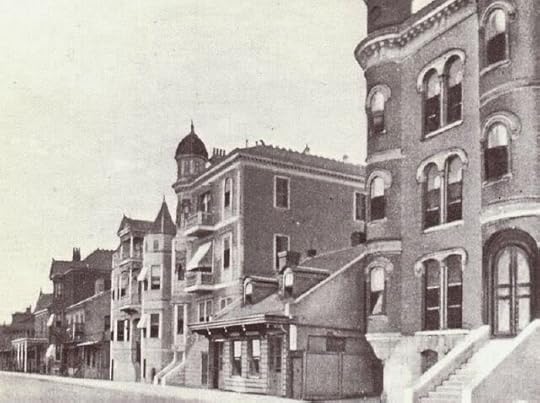
The Arlington is the one with the round cupula on the roof
Josie and John lived a comfortable life there. Her whores commanded the outrageous price of $5.00 per hour. And in the late 1800’s, that was an amazingly high fee considering that most men only earned 22 cents per hour. Only the well-to-do could afford it.
The Arlington catered to the kinkiest tastes, a focus on the odd and unusual, and it featured a live porn show called The Circus in which sex acts were publicly performed. Josie provided specially trained whores for fetishists and sadomasochists. All for a price, of course. Though it had a reputation for depravity, and her house catered to just about anything, she drew the line at deflowering virgins. Even though she could charge $200 or more for the deflowering, she never permitted it. Rather, she bragged that no girl had ever lost or would ever lose her virginity at The Arlington – and she stayed good to her word on that. Her business grew and soon, she could afford to buy herself her own mansion, country house, and even a farm.
In 1905, a fire ripped through the brothel, leaving it ravaged. Josie nearly died in the fire. Temporarily, until she could re-establish her house, Josie moved her business to a few rooms above a saloon owned by one of her friends. It did not take long for the new site to be dubbed The Arlington Annex. The owner was so proud, he had the name painted over the front doors.
With her business uninterrupted, Josie set about renovating and repairing her brothel. She set out to make it even more lavish and ornate than before. ington was even more elegant than before. Having barely survived the fire, Josie changed. She began to shut herself off to society and became a recluse. She moved to her private mansion, leased the brothel to one of her whores, sold off many of her possessions and holdings to her friend who had given her the rooms over his saloon, and purchased a large burial plot in the Metairie Cemetary.
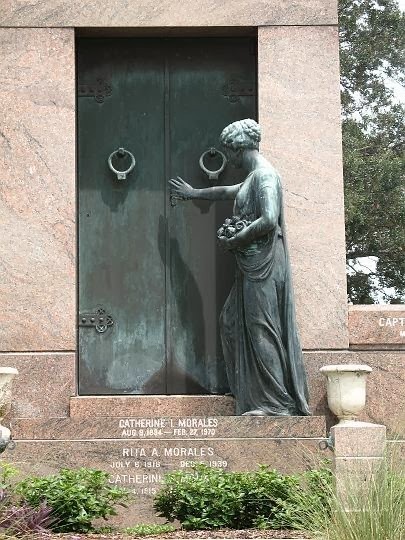
At the cemetery, she constructed an flamboyant tomb of red marble with ornate copper doors. At the doors of the tomb is a bronze statue of a young woman knocking at the door that represents the many virgins that Josie prevented from entering a into a life of prostitution.
Josie Arlington’s mental and physical health went into decline. She became temperamental, unstable, and querulous which sunk into full fledged dementia. She died at the age of 50 and was buried the next day.
The madames and prostitutes and clients of New Orleans sent flowers, but few attended her funeral. A week later, her boyfriend married one of her female relatives, Josie’s father stepped in to contest her will, but the entire estate went to the newlyweds.
Meanwhile, at the tomb, people began to report seeing the tomb burst into flames after dark. The site became a tourist attraction. Then, more terrifying happenings occurred. Two grave diggers said they witnessed the statue of the girl at the door vanish and walk about in the cemetery. This upset the family, so they removed Josie’s corpse to a different grave and sold the haunted tomb back to another family. Even though the cemetery caretakers no longer identify the haunted tomb to curious tourists, it is said that the bronze virgin still takes her walk through the cemetery.
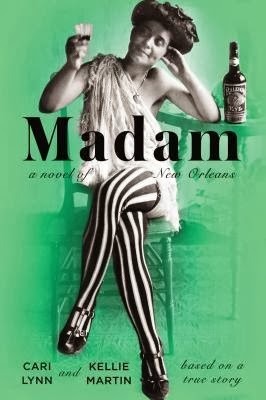
Book Review
Madam by Cari Lynn and Kellie Martin is biographical novel based on the life of Marie Deubler, aka Josie Arlington, the madam of a notorious brothel in Storyville, New Orleans. The story takes place is the late 1800’s and begins with a young Marie working as a lowly street prostitute earning mere coins. She shares quarters and works shifts with another prostitute in Venus Alley, a run-down alley of shacks and crates where whores lay for the poorest dregs of society. She struggles to survive and keep her brother and his wife supported. When she learns the street where she works will be torn down, and a new red light district will open called Storyville, she works hard to re-establish herself there.
Meticulously researched, the book includes important personages of the times, and emits a strong flavour of turn of the century New Orleans. It deals with the political and social climate of the time including racial conflict between whites, blacks, ad Creoles, political corruption, and the modernization caused by the coming of the railroad. Of course there is a strong sense of New Orleans culture with Jazz and food and vibrant life.
From the harsh life on the lowest rungs of social ladder, to the opulence of the rich and wealthy, this novel is sure to entertain. Colorful characters, vivid descriptions, and a compelling storyline kept me turning the pages at a furious pace. And just because this book is about prostitution, in no way does this book disrespect women. Rather, it makes one sympathetic to their plight. I hope to read more books by these authors!









Published on March 03, 2014 15:17
February 13, 2014
Sarah Rosetta Wakeman - A Brave Soldier of the American Civil War
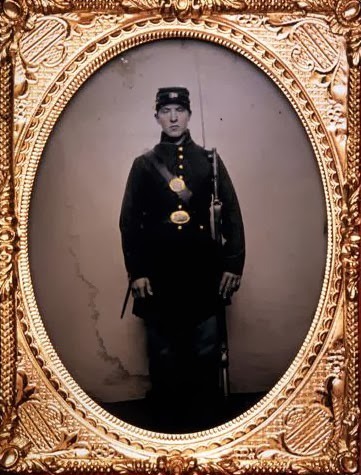
Sarah Rosetta Wakeman(AKA - Lyons Wakeman)
During the U.S. Civil War, when women were mere chattel and women’s rights was unheard of, Sarah Rosetta Wakeman (January 16, 1843 – June 19, 1864) had the guts to disguise herself as a man. The oldest of nine children, she left home to avoid family discord. To earn her own way and a decent living, she disguised herself as a man to secure a job as a boatman. Co-workers, all burly men, were talking about enlisting for the Union Army to fight in the U.S. Civil War. After all, there was good money to be made and Sarah needed to earn enough to secure a comfortable future. So, she enlisted on August 30, 1862 under the name of Lyons Wakeman. The enlistment papers completed at the time listed Wakeman as 21 years old, five feet tall, fair-skinned, and with blue eyes. She was assigned to the 153rd Regiment of the New York State Volunteers.
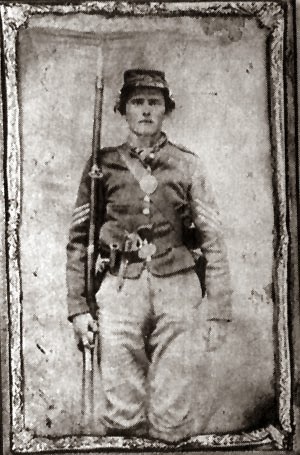
Her first assignment was guard duty in Alexandria, Virginia and Washington DC. While there, she took a big risk and wrote her first letter home to explain to her family why she had left home and that she had enlisted. Because she was now financially independent, and was saving her money, she included a small sum of money to soften the blow. Of course, she had to use her real name, and if anyone in the military intercepted it, she risked losing her job as a soldier. This she didn’t want to do because it was a great source of pride to her that she was considered a “good soldier” among her peers. She did not know at the time that her family never read any of her letters home and hid them away in an attic. So Sarah kept writing, and the letters kept piling up unopened.
In 1864, her regiment was sent into active battle at Pleasant Hill, Louisiana. One of 11,000 soldiers, Sarah fought bravely. In her last letter home, she reported:
“Our army made an advance up the river to Pleasant Hill about 40 miles (64 km). There we had a fight. The first day of the fight our army got whip[ped] and we had to retreat back about 10 miles (16 km). The next day the fight was renewed and the firing took place about eight o'clock in the morning. There was a heavy Cannonading all day and a Sharp firing of infantry. I was not in the first day's fight, but the next day I had to face the enemy bullets with my regiment. I was under fire about four hours and laid on the field of battle all night. There was three wounded in my Co. and one killed. I feel thankful to God that he spared my life, and I pray to him that he will lead me safe through the field of battle and that I may return safe home…the dead lay sometimes in heaps and in rows… with distorted features, among mangled and dead horses, trampled in mud, and thrown in all conceivable sorts of places. You can distinctly hear, over the whole field, the hum and hissing of decomposition."
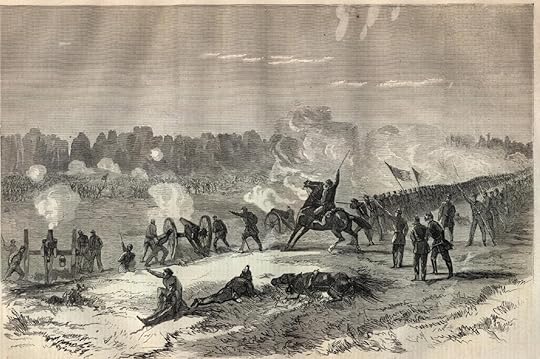
The Battle of Pleasant Hill
Because the soldiers drank water contaminated by the bodies of rotting animals, like many of her comrades, Sarah contracted dysentery and died in a hospital in New Orleans. Sarah carried her secret identity as a man to her grave, for she was buried as “Lyons Wakeman.”
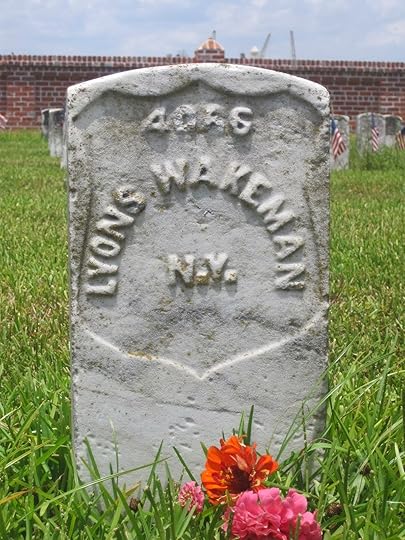
Sarah Wakeman's story has been immortalized in the novel, I Shall Be Near To You, by Erin Lindsay McCabe.

From the Back Cover
An extraordinary novel about a strong-willed woman who disguises herself as a man in order to fight beside her husband, inspired by the letters of a remarkable female soldier who fought in the Civil War.
Rosetta doesn't want her new husband Jeremiah to enlist, but he joins up, hoping to make enough money that they'll be able to afford their own farm someday. Though she's always worked by her father’s side as the son he never had, now that Rosetta is a wife she's told her place is inside with the other women. But Rosetta decides her true place is with Jeremiah, no matter what that means, and to be with him she cuts off her hair, hems an old pair of his pants, and signs up as a Union soldier.
With the army desperate for recruits, Rosetta has no trouble volunteering, although she faces an incredulous husband. She drills with the men, proves she can be as good a soldier as anyone, and deals with the tension as her husband comes to grips with having a fighting wife. Rosetta's strong will clashes with Jeremiah's while their marraige is tested by broken conventions, constant danger, and war, and she fears discovery of her secret even as they fight for their future, and for their lives.
Inspired by more than 250 documented accounts of the women who fought in the Civil War while disguised as men, I Shall Be Near To You is the intimate story, in Rosetta’s powerful and gorgeous voice, of the drama of marriage, one woman’s amazing exploits, and the tender love story that can unfold when two partners face life’s challenges side by side.
Book Review
This impressive novel, is the story of one woman’s bravery and gumption as she fights alongside men in one of the hardest fought civil wars in history. Author Erin Lindsay McCabe spent years researching the phenomenon of women disguised as men in order to fight a war.
The novel begins with Sarah Rosetta Wakefield's early family life and her motivation to leave her family to join the army. The duties she was assigned and the battles she fought are based on her own story, and that of other women, who secretly enlisted in the army.
In a poignant, authentic first person narrative, I could not help but to be drawn into the struggles and challenges Sarah so stoically faced. From first page to last, this was a gripping tale demonstrating the guts and glory and indescribably courage the few exemplary women demonstrated in order to be near their husbands or simply to seek to improve their circumstances for later in their lives.
"I Shall Be Near To You" is based on factual events, and is full of vibrancy and emotion. It is definitely a must read! Buy it for your mothers, wives, or daughters!









Published on February 13, 2014 03:36



